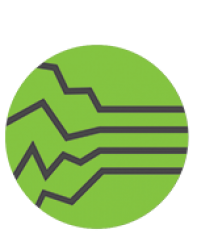When my last cheque came last January, and all my leads were silent or in a holding pattern, I took a bet on some contract work for a little company about an hour away. Over the last 8 months, I’ve learnt a lot, both about myself, the direction I want this company to go, and on the applicability and value of what it is that I do.
Continued from part 1
Part 2: New tools
Alteryx
When I started at Nike, I had a passing interest in Alteryx, a product that I saw as something that would be useful for a big company, but may not have much other value. And with the annual price tag at the level it was, there was no way I could justify learning the product and then trying to find clients that would want those services.
Within 3 months, I was an avid convert and see its value in a multitude of situations. The best thing about contracting with a company, for me, are these practical learning opportunities. I learn things really quickly–and I have great teachers at Nike–but besides that, Alteryx is such an incredibly flexible tool that it can be applied to problems big and small.
Data blending
Its primary strength is its ability to encode commonly-used queries into tools that can simply be copied and pasted. Additionally, as a blending tool, it does the job so incredibly quickly, that it probably pays for itself in a couple of weeks. Simply put, an amateur SQL user like me may spend days perfecting a text-based query in a frustrating circle of guess-check-research-reimplement-fix until the query is perfect. Or, I can do the same thing in Alteryx and the development cycle goes to minutes.
As a data-blending tool, I know no other parallel. And becoming a part of the community of Alteryx users here in Portland, like with the Tableau User Groups, will continue to deepen my experience, breadth and knowledge.
Alteryx Server: Automation
When I started at Nike, I inherited a process that took me roughly a full workday to complete. There wasn’t a lot to running the processes (I literally hit ‘run’ on a ‘runner’ that Nike developed to run several processes in series), but the processes took about 5 hours to run, and then I had other tasks to take care of to finalise the batch.
Using Alteryx server, we automated the pushing of this button to Monday morning. This meant that by the time I was done with my Monday morning standup meetings, I had the full data set, run weekly, available to me before lunch. I’ve since moved this process to Sunday to take advantage of off-peak server traffic so as to be less of a nuisance to those other users who may still be running processes manually on Monday morning, bless their hearts.
Tableau
I was primarily hired for my Tableau prowess. And my dashboarding and storytelling have only improved at Nike.
Dashboarding as a substitute for SQL snippets
On a semi-weekly basis, we get reports from our IT department that tell us very rudimentary metrics about our business. On a product/week-of-projection grain, I get a summarised count of products that trip business logic errors. But when I get a count, say of 52, I don’t know if that is one product with a full year of problems or 52 products with one week of problems.
So, naturally, I built out a dashboard.
Using data from other parts of the business I was now familiar with, I grabbed relevant metrics and blended the data in Alteryx. Now, I had everything I needed to show a quantity versus time viz for each and every relevant product that tripped these errors in the report. Visual, intuitive, and for additional flair, I included the original query in the top-left portion of my dash to use as a filter.
This saves me, and the business, hours of time (that we simply didn’t spend) trying to interpret and understand the relevance of these reports. From a continuity of operations standpoint, this is a superior product to the semi-weekly email (which was something that our team inherited over time). If I inherited a dashboard that was thought out and relevant, I would think really highly of my predecessor. And that’s my metric as a contractor: am I leaving the place better, cleaner, and smarter than when I started.
I can confidently say yes.
Kanban/Trello
I was introduced to Kanban boards in grad school. When you study business in Asia, you can’t avoid the ingenuity of Japanese process design. But a couple of months ago, our team started using Trello for project management, and it has worked out so well.
Personally, I have got a lot out of it because I’m able to scribe my internal narrative on a card, keep track of my to-dos, cross off items on a checklist, and quickly and fluidly change the dynamics of my tasks.
I work with my manager to reprioritise tasks often, and we meet weekly to all talk about our tasks and how we can help one another with them.
This is a (free!) tool I will definitely be taking with me.

